
The Business of Fashion
Agenda-setting intelligence, analysis and advice for the global fashion community.

Agenda-setting intelligence, analysis and advice for the global fashion community.
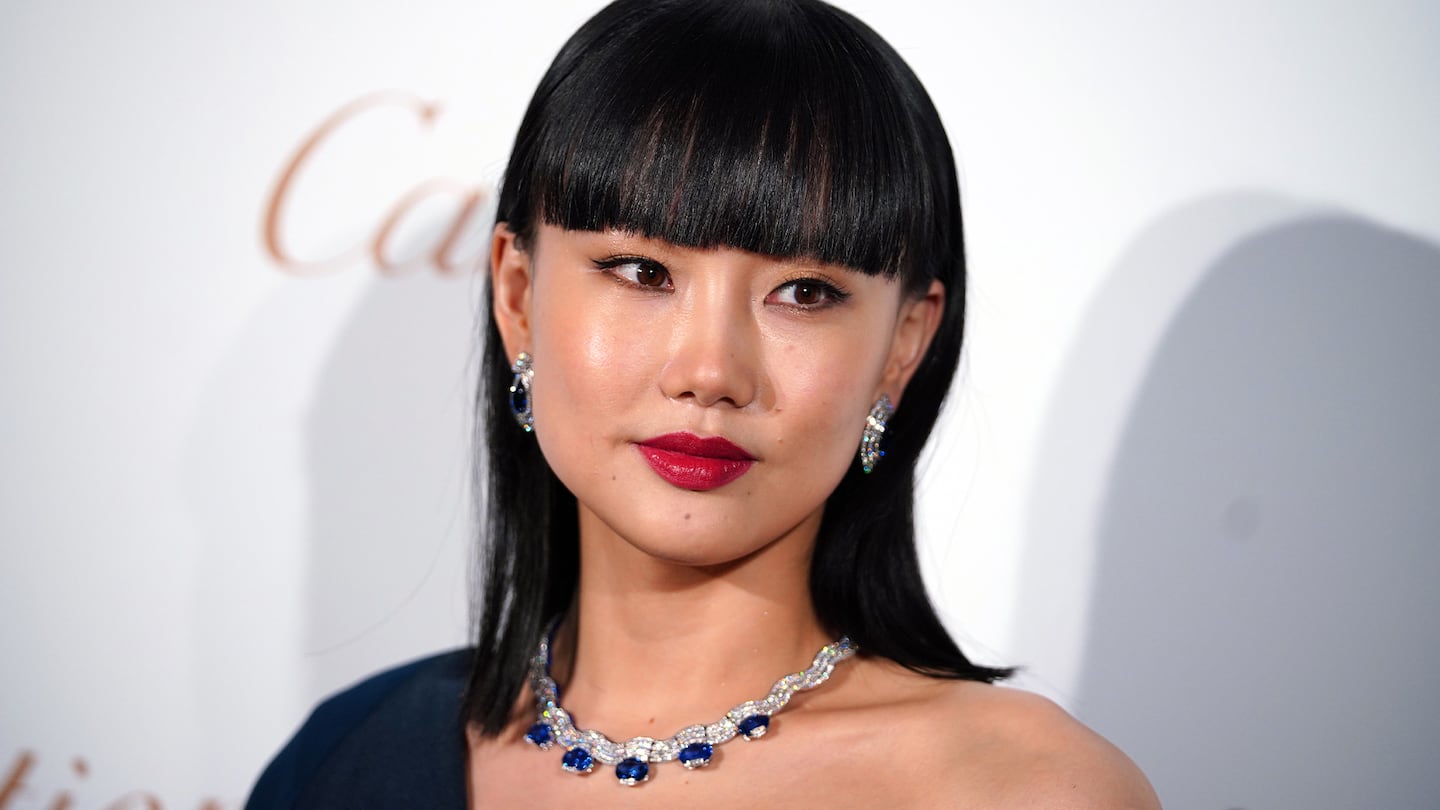
Hard luxury is emerging as an increasingly attractive category in China, but the jewellery consumer’s mindset, motivations and behaviour have all undergone a fundamental shift over the past five years.
Fine jewellery has traditionally been seen as an investment, rather than a fashion-led category. Long dominated by unbranded products, branded jewellery in China still accounts for a relatively low 15 percent of the overall market, compared to 20 percent globally.
“It’s not about wearing gold because everybody does; it’s wearing a branded product that fits with what I stand for,” said Daniel Zipser, a senior partner at McKinsey & Company who leads the firm’s consumer and retail practice in Greater China.
This means international brands have barely scratched the surface when it comes to penetrating the broader Chinese jewellery market, which was valued at 647 billion yuan ($100.13 billion) in 2020, according to Euromonitor International.
ADVERTISEMENT
If ever there was a time to double-down on the mainland, experts say, it is now.
I think the shift of the majority of sales happening domestically [in China] will not reverse.
Though Euromonitor data indicates that the overall jewellery market in China declined 8.5 percent in 2020 year-over-year, some segments and price points outperformed in an otherwise challenging year marred by the pandemic. Domestic sales in the luxury jewellery category, for example, rose 39.3 percent and the luxury fine jewellery category saw sales rise 50.6 percent.
Though these gains are largely the result of domestic luxury spend that might otherwise have happened overseas if consumption were not trapped within China’s borders, Euromonitor’s estimates of future growth remain rosy. The overall jewellery market will bounce back to growth of 18.11 percent in 2021 and enjoy a compound annual growth rate (CAGR) of 8.1 percent through 2023. The luxury jewellery segment is tipped to grow 24.8 percent this year and see a CAGR of 18.5 percent through 2023; luxury fine jewellery, meanwhile, is set to grow 28.5 percent this year and enjoy a CAGR of 20.5 percent until 2023.
“I think the shift of the majority of sales happening domestically [in China] will not reverse,” said Cartier’s chief executive Cyrille Vigneron, in the inaugural edition of The State of Fashion: Watches and Jewellery report co-published by The Business of Fashion and McKinsey & Company.
“The market will grow by itself anyway, and faster domestically than overseas or in travel retail,” he added.
While there is little doubt that the overall size of the opportunity is huge, some players will be better placed than others to take advantage of the double-digit growth expected in the years ahead.
Domestic Market Leaders
China’s relatively underdeveloped branded jewellery market has always been dominated by jewellery giants from the mainland and Hong Kong.
ADVERTISEMENT
Currently, the top four jewellery brands in China by market share, according to Euromonitor data, are the Hong Kong-headquartered Chow Tai Fook and Chow Sang Sang (number one and four respectively) and the Shanghai-headquartered Lao Feng Xiang and Lao Miao (number two and three respectively).
Though these brands are little known in the west, in China they are synonymous with jewellery, specifically the 24-carat gold jewellery and other materials and design elements with auspicious meanings in Chinese culture that have long been the focus of local consumers. With thousands of retail outlets across the country, these incumbents have the dual advantage of local knowledge and deep market penetration with which they can make the most of the coming jewellery boom.
Niche Chinese brands such as Hefang, Yvmin and Ooak are also beginning to gain traction, particularly among the post-90s and post-00s generations, taking share from affordable global brands and unbranded jewellers alike.
“This trend is particularly obvious in mainland China and the rest of Asia, where there is a mushrooming of micro brands from both ground-breaking new names — small and big — and spin-offs of well-known brands,” said Louis Chan, assistant principal economist of the global research team at HKTDC, which operates the Hong Kong International Jewellery Show, among other industry events.
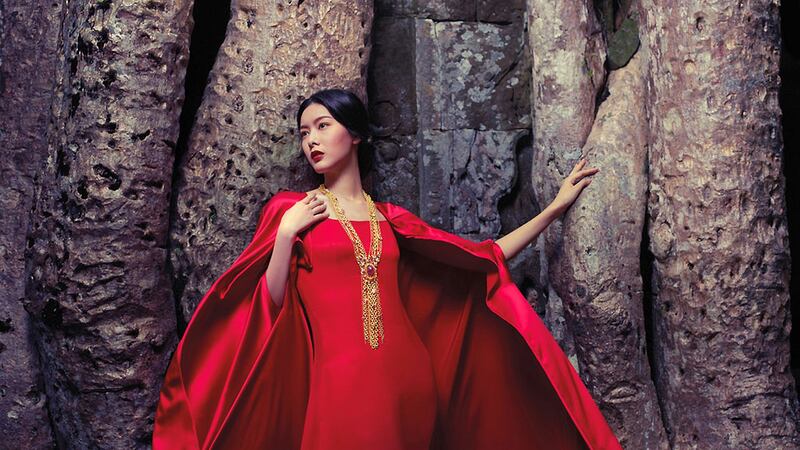
To some extent, it is fair to say that most of China’s big heritage brands have struggled to adapt their businesses to the new era, with some lagging when it came to e-commerce adoption for example. But Chow Tai Fook has been able to leverage the pandemic period for better financial results than it has in years gone by.
In the first three months of this year, the group saw sales grow 152.6 percent year-on-year, albeit off a low base considering the restrictions on physical retail that were in place from late January to April 2020 in different parts of China, as the country worked to contain its first widespread outbreak of Covid-19. It also increased points of sale by 150 since the start of 2021, to 4,591 — giving it an enviable footprint across China’s vast and varied geography.
“To penetrate lower-tier cities [and capture consumers of unbranded jewellery in those markets], we have to work with a good partner — one who understands local knowledge, local economic situations and local relationships,” explained Kent Wong Siu-Kee, Chow Tai Fook Jewellery Group’s managing director for corporate and Hong Kong, Macau and Overseas.
Approximately 90 percent of Chow Tai Fook’s franchise partners are local jewellery operators who have operated their own store in their respective cities for a significant period, Wong added, which means they already have a relationship with local customers.
ADVERTISEMENT
“We bring in our brand — our operation model and our management system, including the IT system — and they can also share in our CRM ecosystem,” he said.
There is no international brand currently operating in China that can compete with these domestic giants when it comes to scale, but in an environment increasingly focused on celebrity-based marketing, brand stories and fashion credentials, international jewellery interlopers might have a different edge.
International Challenger Brands
To give an idea of just how fragmented China’s jewellery market remains, Chow Tai Fook and Lao Feng Xiang, with only 7.6 and 7.5 percent of China’s jewellery market each according to Euromonitor data, are far ahead of their next competitors, Lao Miao has 3.5 percent and Chow Sang Sang 1.3 percent.
The only international jewellery brand to make the top five by market share is Cartier, with 1.1 percent, though other international players are rising. Tiffany & Co., for example, at number seven on the list, has grown its market penetration considerably over the past year, reaching 1 percent market share in 2020, up from 0.6 percent in 2019.
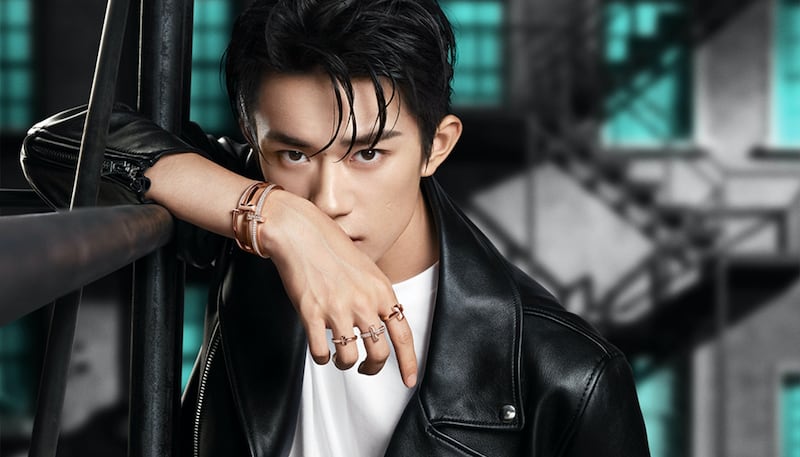
With so much room left for brands to convert consumers of unbranded jewellery, the ability of these international brands, and others, including Van Cleef and Arpels, Bulgari, Swarovski and Pandora, who also feature in China’s top 15 selling brands, to win over new customers will hinge on a number of factors. Chief among them will be the localisation of high-quality, compelling brand stories and the online environment will increasingly be where the battle is won.
Last year saw a slew of hard luxury brands embrace storytelling-based e-commerce with newfound enthusiasm.
Globally, Cartier’s parent-company Richemont went all in on e-commerce, partnering with Alibaba to invest in Farfetch as part of a $1.1 billion deal. Only days after the deal was announced, Cartier hosted its first jewellery livestreaming show on Alibaba’s Taobao Live during Alibaba’s Double 11 shopping festival, featuring more than 400 watches and jewellery items, including a necklace valued at $28.3 million.
“In China, e-commerce in the jewellery industry [has traditionally been] very, very transactional [but] there’s a lot more storytelling happening on Tmall today because, at the end of the day, it’s the biggest store window in the world,” said Jacques Roizen, Pandora’s senior vice president and China general manager.
“To treat it just purely as a transaction is a huge missed opportunity and that’s why we’ve made a lot of changes in upgrading our homepage [there],” he added.
Those changes seem to have paid off. Earlier this month, during China’s major mid-year sales period known as 618, Pandora was catapulted into the top three of Tmall’s ranking of top-selling jewellery brands for the sales event.
Beyond branding, digital storytelling and sales festivals, there is another driver for China’s jewellery boom: the unquenchable desire for design-led jewellery that consumers can use to symbolise their own personal style.
Leading by Design
When Alice Xu founded Ooak in 2012, it became one of China’s first multi-brand stores. Her focus was working with niche independent jewellery brands from around the world, introducing them to the China market, where a growing segment of consumers was beginning to treat the category more like fashion — a vehicle for self-expression — rather than purely as an investment commodity.
Over the years, Ooak has worked with more than 1,000 brands in this way, but in 2017 the focus of the business changed significantly, to building her own in-house brand.
The vision was to be a brand, designed by a team of top international design school graduates, priced somewhere in between the Taobao brands flooding the mass market fashion jewellery space, and the niche designers and luxury brands that consumers buy for a special occasion.
They are willing to try all types of stuff. They will buy Tiffany, Cartier, and also designer brands.
As more Chinese consumers, particular younger and more fashion-forward men and women, convert to brands, it’s likely that this design-led niche between the entry level and premium jewellery markets will see explosive growth (Ooak’s price point sits between 300 and 3,000 yuan, $46.42 and $464.35). Xu believes that this segment’s growth need not be at the expense of the growth of luxury jewellery or luxury fashion brands with jewellery as part of their offering (worldwide, luxury fashion brands are expected to make up 10 percent of growth in the branded market by 2025).
In her telling, the young women who make up Ooak’s customer base at their 20-odd stores around China’s first tier cities (as well as online, where 40 percent of Ooak’s sales are made) are not choosing between buying luxury branded jewellery and more affordable, design-led niche players like Ooak. They are buying both, to serve different needs.
“They are willing to try all types of stuff. They will buy Tiffany, Cartier, and also designer brands; it’s becoming more of a mix,” Xu said. “When they buy from the luxury brands, [they’re looking for] the signature style [and they might buy] once or twice a year, but when they buy Ooak or other fashion jewellery, it’s to match their outfits, so they buy much more frequently.”
With this change in mindset comes a host of new opportunities, but Chinese consumers still need more than a brand name, easy access and a pleasing aesthetic to win them over. In many categories, but especially one associated with a sense of occasion as closely as jewellery is, there is also the emotional element to consider.
Much like the motivations for buying jewellery, the reasons people feel a personal attachment to jewellery is broadening in China — especially in the wake of the pandemic.
Whereas once jewellery gifting would be associated with major life events — a wedding or graduation — today younger women and men also more commonly self-gift as a reward for hard work and achievement. A jewellery purchase these days can also be a kind of compensation, a way of treating oneself to something nice when missing out on other pleasurable activities — like an overseas trip, for example.
“That intangible value is also important,” Chow Tai Fook Jewellery Group’s Wong said. “So, we have to not only give the right product, authenticity and top quality, but also give something that the customer believes fulfils that emotional need.”
时尚与美容
FASHION & BEAUTY
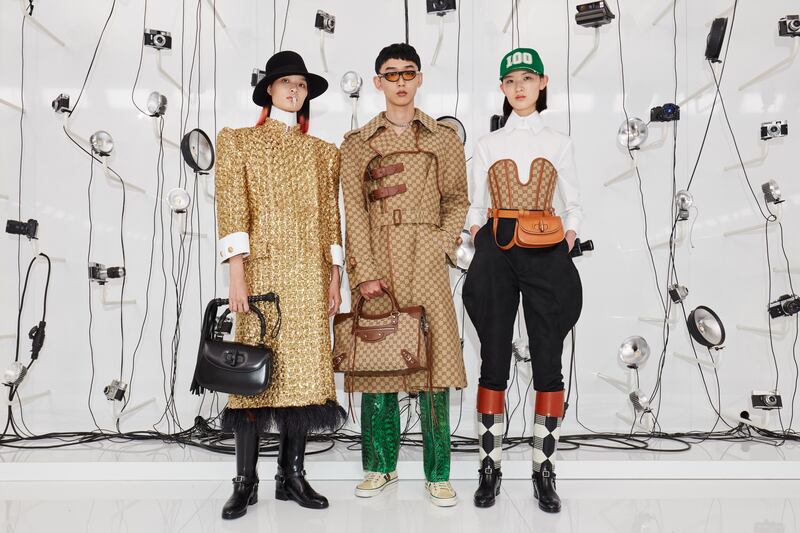
Gucci Shows Aria Collection in Shanghai
Gucci staged a runway show at the historic Shanghai Exhibition Centre on Tuesday evening, featuring its Aria anniversary collection, first released digitally in April, alongside 13 new looks making their debut. House ambassadors Lu Han and Ni Ni were on hand for the high-octane catwalk, which took place directly next door to the Gucci Garden Archetypes exhibition, which is open to the public until August 1. The new looks were very much in keeping with the original Aria line-up, further exploring Alessandro Michele’s revision of the brand’s equestrian heritage, in particular. (BoF)
Converse, Levi’s, UGG Among Few Foreign Brands Celebrating Pride Month With China Campaigns
Unlike the enthusiastic engagement it enjoys in many western countries, Pride is still not celebrated widely by brands in China, though some global brands continue to distribute their rainbow-themed LGBTQI+ campaigns on Chinese channels too. After bringing its global Pride campaign to China for the first time in 2020, footwear brand UGG did the same again this year with a gender-neutral collection. Though the China campaign is an extension of its global effort, the version seen in China was fronted by Jiang Sida, one of the country’s few openly gay celebrities. Levi’s brought its Pride activations to China for the third-year running, not only offering its rainbow-accented denim for the occasion, but also partnering with Absolut on gift boxes. (BoF)
Bosideng Saw Net Profit Rise 42% in 2020
China’s go-to maker of down outerwear, Bosideng, released its financial results for the fiscal year ended 31 March 2021, which showed its revenue up 10.9 percent year-on-year to 13.52 billion yuan ($2.09 billion) and net profit up 42.1 percent to 1.71 billion yuan ($264.87 million). The brand has been focusing on improving its pricing and brand positioning in recent years, and has collaborated with designers such as Jean Paul Gaultier to convert higher-end consumers. Last year, Bosideng also trimmed its physical retail network substantially, decreasing its total points of sale by 716 to 4,150. (BoF)
科技与创新
TECH & INNOVATION
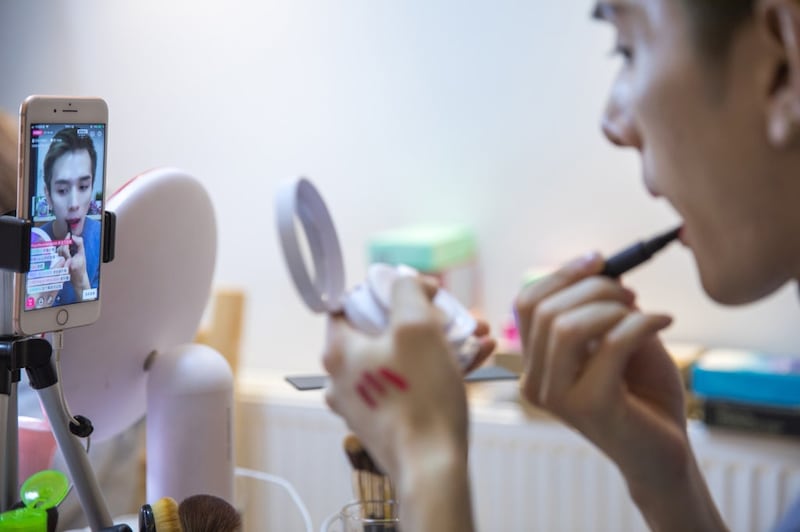
185 Million Chinese Men Follow Beauty Influencers
The male following of beauty KOLs (or key opinion leaders, as influencers are known in China) has reached 185 million, according to a recently-released male consumption insight report from QuestMobile. Men aged 25 to 30 were the most likely to follow beauty KOLs and make up over 25 percent of the total male audience for these influencers. The beauty-related topics that interest Chinese men most included removing under-eye bags, treatments for acne and hair transplants. (BoF)
Louis Vuitton Chooses a Surprising Livestream Partner for Men’s Show
Louis Vuitton’s men’s show, as part of Paris Fashion Week Men’s, was livestreamed in partnership with Nylon China to its Chinese audience by short video and livestream app, Kuaishou. Unlike fierce competitor, Douyin, the local version of TikTok, Kuaishou has been traditionally thought of as catering more to China’s lower-tier city and rural populations. Some of its biggest stars are farmers and villagers. The move perhaps shows Louis Vuitton’s interest in expanding its influence down China’s city tiers, and also reaching a younger market there (lower-tier consumers are a huge opportunity for luxury brands because a lower cost of living gives them a higher disposable income). Kuaishou recently claimed to have over one billion monthly active users in China. (CMC Group)
消费与零售
CONSUMER & RETAIL
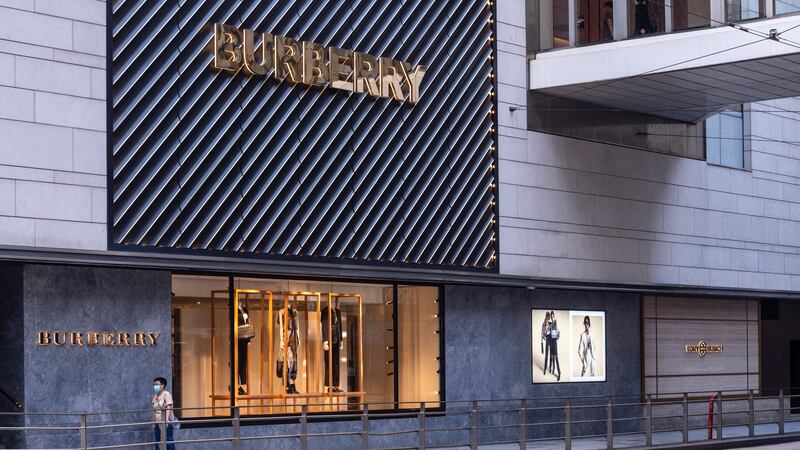
Hong Kong Retail Landlords Mull Rent Increases
The city’s landlords have begun discussing rent increases with tenants in advance of upcoming lease renewals as its retail and financial sectors emerge from two years of social unrest and the pandemic. Hong Kong’s economy grew by 7.9 percent in the first quarter of 2021 — the biggest quarterly growth in 11 years and the end of six quarters of recession. Lawrence Wan, senior director for retail advisory and transaction services at the local arm of commercial real estate agency CBRE predicts that new or renewed agreements could be frozen for a year before increasing 5 to 10 percent in second and third years as the economy is further boosted by the return of tourists. (BoF)
China’s Shopping Centre Business Almost Recovered to Pre-Pandemic Levels
An index that tracks the development and health of China’s shopping centre industry, compiled by Nielsen and the China Chain Store and Franchise Association, shows that shoppers are visiting shopping centres as frequently and staying as long as they did before the pandemic, but their willingness to spend money is yet to fully recover, as consumers tend to window shop and enjoy leisure time instead of shopping at physical stores. The comprehensive index rebounded to 67.4 points from 65.2 points a year ago, a level that remains below 2019′s index of 69.4. (Shine)
政治,经济与社会
POLITICS, ECONOMY, SOCIETY
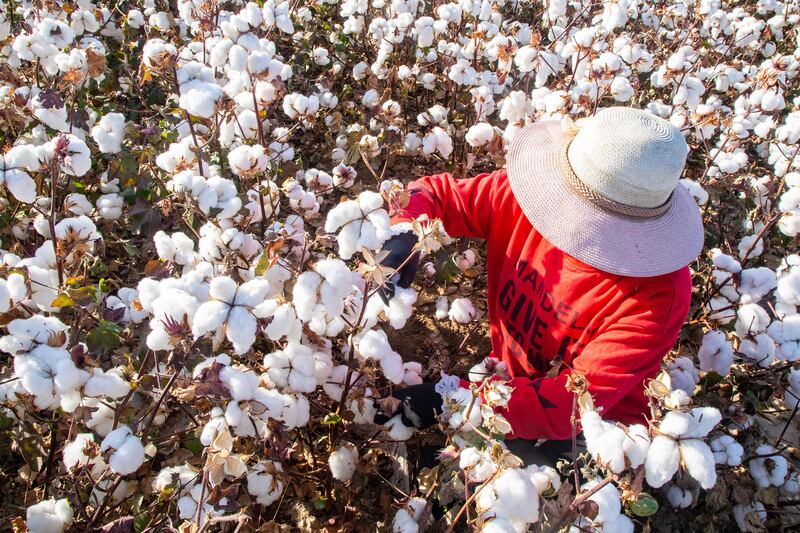
China May Open Up to More Foreign Cotton After Xinjiang Ban
China looks likely to allow more cotton imports than usual this year after a US ban on fibre from Xinjiang spurred some Western retailers to avoid material produced from the controversial region. Beijing may issue another batch of import quotas soon to meet rising global demand for textiles after awarding 700,000 tons last month, said Xu Yaguang, an analyst at Huatai Futures. China issued just 400,000 tons of quotas in 2020. Washington banned entry of all products using cotton from Xinjiang early this year over China’s alleged ill-treatment of its ethnic Uighur minority. (Bloomberg)
China May Keep Borders Closed Another Year
China will keep its borders largely closed until the second half of 2022, according to unnamed sources close to the central government. The abundance of caution driving this decision, taken during a May meeting of the country’s State Council (according to the sources), is due to the country’s desire to keep China’s community cases of Covid-19 at virtually zero as it prepares for major events over the next year, including hosting the Winter Olympics in February 2022. Even though Chinese citizens may be able to leave the country and return (so long as they are vaccinated and undertake the 14 to 21 day quarantine mandated by individual jurisdictions within the country), it will certainly discourage non-essential travel until at least the end of 2022. (The Wall Street Journal)
China Decoded wants to hear from you. Send tips, suggestions, complaints and compliments to our Shanghai-based Asia Correspondent casey.hall@businessoffashion.com.
With consumers tightening their belts in China, the battle between global fast fashion brands and local high street giants has intensified.
Investors are bracing for a steep slowdown in luxury sales when luxury companies report their first quarter results, reflecting lacklustre Chinese demand.
The French beauty giant’s two latest deals are part of a wider M&A push by global players to capture a larger slice of the China market, targeting buzzy high-end brands that offer products with distinctive Chinese elements.
Post-Covid spend by US tourists in Europe has surged past 2019 levels. Chinese travellers, by contrast, have largely favoured domestic and regional destinations like Hong Kong, Singapore and Japan.